IRF
IRF Uppsala
RPF programme
IRF-U Staff
Seminars
Courses
PhD studies
Examensarbete
Workshops
Cluster
...EFW
...Quicklook
Cassini
Rosetta
Solar Orbiter
Intranet
| INSTITUTET FÖR RYMDFYSIK | UPPSALA |
 |
|
| Swedish Institute of Space Physics | (59°50.272′N, 17°38.786′E) |
BSc project (10c)/Kandidatprojekt (10hp)
Cosmic Dust Detection by the Solar Orbiter Using Machine Learning
Students: Joar Lönngren and Ludwig Tiston, Uppsala UniversitySupervisor: Michiko Morooka
Assistant supervisor: Johan Öfverstedt (UU)
Period: Spring 2023
Abstract
This project aims to investigate neural network systems as an effective tool for the in-space captured dust impact signal detection. Cosmic dust is the nanometre to micrometre fine-sized particles that exist in the interplanetary region. They originate from comets, asteroids, the planets and their moons and rings, or even the interstellar region. Some are visible to the human eye as, for instance, zodiacal light. However, most dust grains are sparsely spread in space and can be captured only by in-situ measurements. One method to capture such a small grain in space utilizes the whole spacecraft’s surface as a detector and uses the onboard electric field measurement to identify their impact signals. Those signals are highly non-linear and often identified manually. A neural network system is a possible solution to improve dust detection for a massive dataset.The European Space Agency’s (ESA) solar physics mission, Solar Orbiter, has electric field measurement (PWI) onboard and can detect the micrometeorite impact signals near the sun. We used two types of PWI datasets to investigate the use of neural network systems in interplanetary dust detection.We first used a pre-trained neural network to the High-Frequency (HF) Time Domain Sampler (TDS) data to adapt further to the new dataset. We were able to obtain good detection classifications as the previous work except for the data with high time resolution, which has not been used for the pre-training before. Therefore, we implemented extra preprocessing to enable classification of data with high time resolution.We trained and tested another neural network on another type of PWI dataset, that is, the Low-Frequency (LF) continuous data. This data type is different from the TDS data type in that it does not come in packets but as a continuous data stream covering an entire day and has a lower sampling frequency. Which required different preprocessing-procedures.Based on the two types of neural network analysis we use above; we have finally been able to investigate the characteristics of dust distribution in the interplanetary region. Using the statistical analysis obtained by the SolO/PWI between April of 2020 to Mars of 2023, among others, the following characteristics have been found:- The neural network analysed dust impact rates show a similar trend as onboard processed dust impact rates.
- Dust impact amplitude was found to be correlated to distance from the sun, spacecraft velocity, and spacecraft radial velocity.
- The impact rate increases as the spacecraft travels sunward.
- Much of the dust appears to have speeds lower than the spacecraft.
Results
![[SolO]](../../img/solo_sun.jpg)
Solar Orbiter [image credit: ESA]